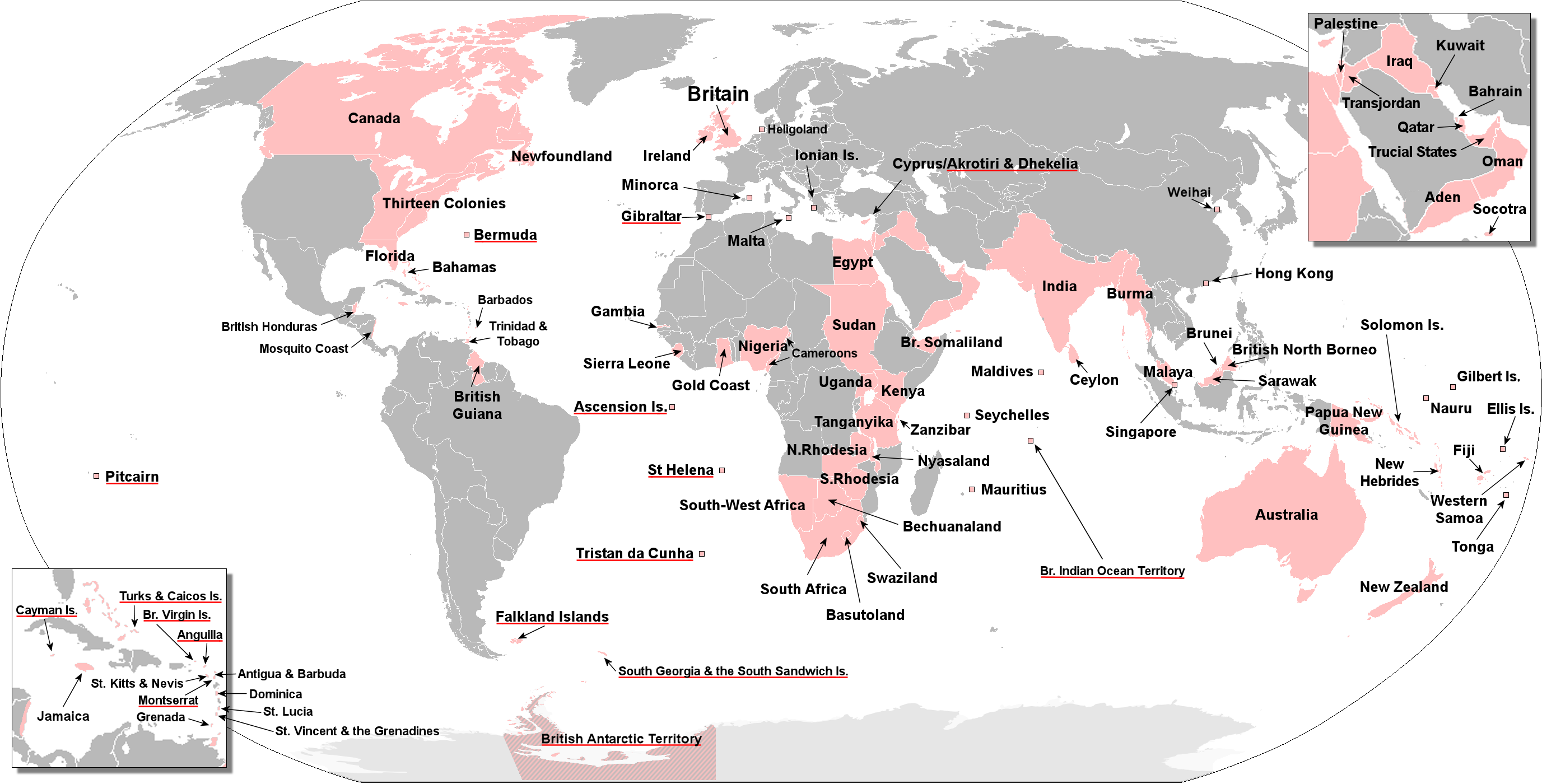Map of Territories Ever Held by the British Empire


David Chen
Data Visualization Specialist
David Chen is an expert in transforming complex geographic datasets into compelling visual narratives. He combines his background in computer science ...
Geographic Analysis
What This Map Shows
This visualization presents an anachronous map detailing the vast territories once held by the British Empire at various points in history. The British Empire, often referred to as the empire on which the sun never sets, spanned continents and oceans, encompassing regions from the Americas to Africa, Asia, and beyond. This map captures not just the geographical spread but also the historical depth of British colonial influence, showcasing territories that have long since gained independence, as well as those that existed only for brief periods.
Deep Dive into the British Empire
The British Empire was one of the largest empires in history, and its territories played a crucial role in shaping global politics, economics, and cultures. At its zenith, the Empire controlled nearly a quarter of the world’s land surface and population. The historical timeline of the Empire can be broken down into distinct phases, beginning with the late 16th century and peaking during the late 19th and early 20th centuries.
The empire was primarily driven by trade, exploration, and a desire for resources. The East India Company, for instance, established trade routes that connected Britain to India and other parts of Asia, ultimately laying the groundwork for direct British governance over the Indian subcontinent. By 1858, following the Indian Rebellion, the British government assumed direct control, marking a significant shift in colonial policy.
Interestingly, the motivations behind the Empire were not solely economic. The British often justified their expansion through the lens of civilizing missions, believing it was their duty to spread Western education, culture, and religion. This paternalistic view had profound implications for the indigenous populations, often leading to cultural erasure and significant social upheaval.
Furthermore, the Empire's influence extended beyond mere territorial control; it left a lasting legacy on legal systems, language, and governance structures in many former colonies. For example, countries like Canada, Australia, and India still retain parliamentary systems that mirror those of the UK. The English language, as a result of this colonial spread, has become a global lingua franca.
Regional Analysis
Diving deeper into the regions depicted on the map, we notice stark contrasts in the legacies of British colonial rule. In India, the British imposed a rigid administrative system that, while efficient in some aspects, also exacerbated social divisions and economic disparities. The aftermath of colonial rule led to significant challenges, including communal tensions and ongoing debates over regional autonomy.
In Africa, the British employed a mix of direct and indirect rule, with varied impacts across the continent. For instance, in places like Nigeria, the British relied on local rulers to maintain order, leading to a complex legacy of governance that continues to influence political dynamics today. Conversely, in regions like Kenya, direct governance often led to violent uprisings, such as the Mau Mau rebellion, highlighting the fraught relationship between colonizers and the colonized.
In the Caribbean, the British Empire's reliance on plantation economies created a legacy of economic dependency and social stratification that persists in many territories. The abolition of slavery in the 19th century brought about significant societal changes, yet the impact of colonial exploitation is still evident in the socio-economic challenges faced by many Caribbean nations.
Significance and Impact
Understanding the historical context of the British Empire is crucial for grasping contemporary global dynamics. The remnants of colonialism can be seen in geopolitical relationships, economic disparities, and cultural exchanges. For example, many former colonies still grapple with the consequences of British-imposed borders that disregarded ethnic and cultural lines, leading to ongoing conflicts.
Moreover, the question of reparations and acknowledgment of colonial injustices has gained traction in recent years. Movements advocating for reparative justice highlight the importance of recognizing historical wrongs as a step towards building equitable relationships in the present.
Looking ahead, the legacy of the British Empire remains a potent factor in international relations. As nations navigate their post-colonial identities, the discussions surrounding governance, cultural preservation, and economic independence continue to evolve. What's fascinating is that the story of the British Empire is not just a historical narrative; it actively shapes the world we live in today, influencing everything from trade policies to cultural dialogues. The map serves as a poignant reminder of this complex legacy, prompting reflection on the interconnectedness of our global society.
Visualization Details
- Published
- August 11, 2025
- Views
- 144
Comments
Loading comments...